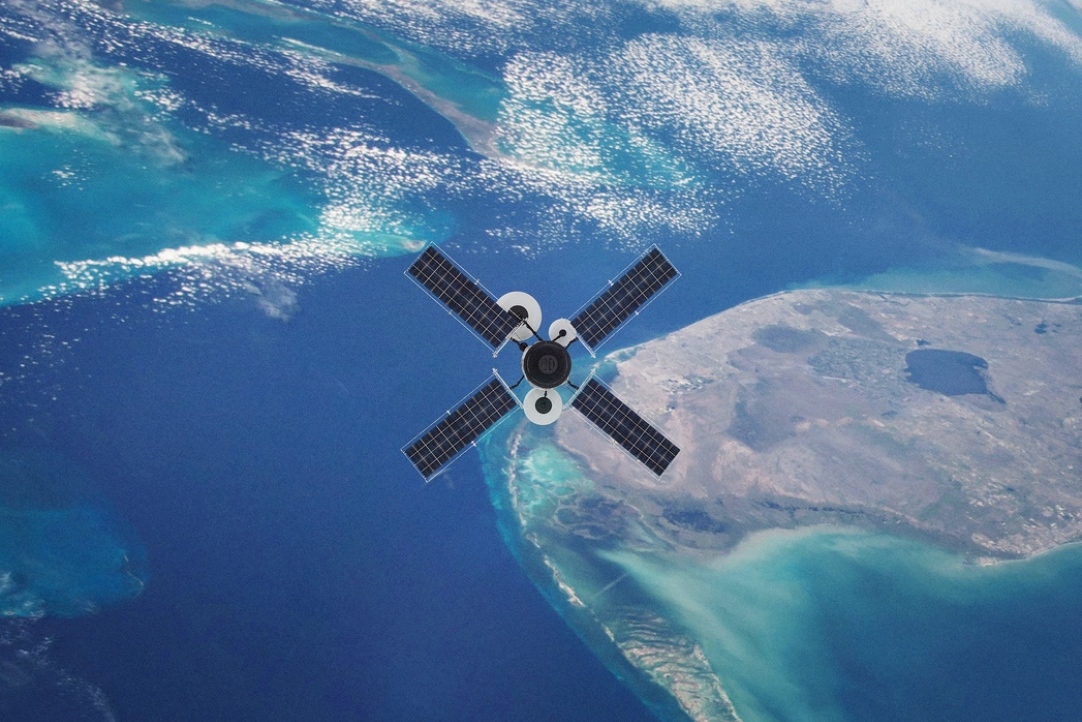HSE University Is Preparing to Launch its Second Satellite into Space

Only one year ago, the first HSE University satellite, developed by specialists and students from the Laboratory of Space Vehicles and Systems’ Functional Safety of the HSE Tikhonov Moscow Institute of Electronics and Mathematics (MIEM HSE) and the Sputnix space company, was launched into orbit. And now, the date of the second HSE University’s satellite launch has been announced: Roscosmos will send it into space from Baikonur Cosmodrome on August 9th, 2022.
Why Arctic Vessels Need Space Satellites
HSE University’s new CubeSat will monitor the Earth’s surface in the Arctic and be part of the system tracking the movement of vessels along the Northern Sea Route. Today, traffic on the Northern Sea Route is constantly increasing, but the Arctic’s tough natural conditions make the development of navigation systems more complicated.
Real-time monitoring uses data from the Automatic Identification System (AIS), with equipment on almost every vessel transferring live information on the vessel’s position and characteristics (identifiers and trajectory parameters). This information is transmitted to the land via coastal receiving stations and/or satellite systems. In Arctic conditions, the reception areas of these coastal stations do not cover all the routes of vessels along the Northern Sea Route, and it is difficult to build the infrastructure in remote Northern regions.
This is why creating a civil constellation of AIS satellites is particularly relevant in Russia today, enabling reliable high-frequency monitoring of vessel movement. Such a constellation, in addition to the obvious financial and infrastructural advantages, would be independent of geopolitical and economic risks related to purchasing equipment from abroad.
HSE University’s Satellite as a Part of the System
The new satellite was developed by the HSE Laboratory of Space Vehicles and Systems’ Functional Safety together with Sputnix. It will become part of the new constellation of satellites, but also remain an educational and research tool for MIEM HSE students.

Andrey Abrameshin, Deputy Director of HSE Tikhonov Moscow Institute of Electronics and Mathematics (MIEM HSE)
‘A complex approach to space technology can be applied in different educational projects of MIEM HSE’, said Andrey Abrameshin, Deputy Director of HSE Tikhonov Moscow Institute of Electronics and Mathematics (MIEM HSE), ‘The development of research and project-based learning at MIEM thanks to commissions in space technology from partner companies will allow student project teams to participate in the development of systems and services of cooperative space missions on CubeSat satellites’.
The satellite will include a Volume-Effective Rocket-Propulsion Assembly (VERA), installed as part of the Space PI programme, which is supported by the Innovation Promotion Fund. The launch of the satellite will be part of the Fund’s project.
The VERA plasma engine is Russia’s first, and one of the first anywhere in the world engine designed for space vehicles with a mass of under 4 kg as part of the CubeSat 3U format. The small size and mass of the newly developed assembly will allow scientists to create and maintain constellations of dozens of nanosatellites in orbit. Nanosatellites can independently maintain their position in orbit and decrease their altitude at the end of their life, in order to drastically reduce the time before they burn up in the upper layers of the atmosphere.
The new satellite, like the first one, will be equipped with a camera for remote Earth imaging. But thanks to the Automatic Identification System and VERA, it will do the job better. And, unlike the first one, its main goal will be focusing on the Arctic regions.
Competition for the Name of the Second HSE University’s Satellite
The launch of the HSE University’s new satellite is scheduled for August 9th, 2022. And today, it needs a name. Staff and students of HSE University are welcome to participate in a competition to suggest what it should be called.
The name should be in Latin characters, contain no more than 15 characters (letters and figures) and reflect the specific characteristics of the new satellite and its relationship to HSE University. The competition is open until April 16th, and after that, HSE students and staff will be able to vote for the best option.
In addition, those entrants suggesting the three most popular names will win prizes with HSE University logos from the MIEM HSE Laboratory of Space Vehicles and Systems’ Functional Safety.
By Valeria Nemna, MIEM HSE Media Centre
See also:
HSE University Satellites: Three Years in Orbit
In March 2024, HSE University celebrated an important milestone — the third anniversary of the successful operation in orbit of its first CubeSX-HSE and CubeSX-Sirius-HSE satellites. These spacecraft, created on the basis of the CubeSat platform for Earth observation, continue to function actively, confirming high technological standards and reliability of the university's developments.
‘We Control the Flight of Small Spacecraft’: How HSE University Launches Satellites
Following the meeting with participants of the 3rd Young Scientists Congress, Russian President Vladimir Putin assigned the government to include the creation and launch of small spacecraft in a new national project. Universities will also be involved in the project. Dmitrii Abrameshin, Head of the Mission Control Centre at the Moscow Institute of Electronics and Mathematics at HSE University, spoke about the mechanism of small satellites and which satellites have already been launched by HSE University.
HSE University’s Third Satellite Launched from Vostochny Cosmodrome
The small CubeSX-HSE-3 spacecraft was created by students and staff of the HSE Tikhonov Moscow Institute of Electronics and Mathematics. It is based on the OrbiCraft-Pro 3U platform by Sputnix. The work was carried out as part of the Space-π project with support from the Innovation Support Fund.
In Space with MIEM: All Systems Go!
On April 12th, the traditional Big Space Break took place at the HSE MIEM. This interactive event for students and staff was organized by specialists from the Laboratory of Space Vehicles and Systems' Functional Safety.
HSE University’s First Satellite Travels 478.7 Million km
The satellite entered orbit two years ago. The launch of the Soyuz-2.1a rocket with a Fregat upper stage and 38 satellites on board, including CubeSX-HSE, took place on March 22, 2021 at the Baikonur Cosmodrome.
Second HSE University Satellite Launched from Baikonur
On August 9, a Soyuz 2.1b rocket launched with a payload of HSE University’s second satellite, which will monitor the land surface of the Arctic region. HSE MIEM Deputy Director Andrey Abrameshin spoke about the university’s space plans, while Top Class competition winner Alexey Gilenko shared his impressions of the launch at Baikonur Cosmodrome.
240 Million Kilometres: HSE Satellite Spends a Year in Orbit
A year ago, on March 22, 2021, at 9:07 Moscow time, a Soyuz-2.1a rocket with a Fregat upper stage was successfully launched from Baikonur Cosmodrome Site 31. The launch vehicle carried 38 satellites, including the CubeSX-HSE satellite developed through the joint efforts of experts and students from the HSE University Laboratory of Space Vehicles and Systems’ Functional Safety of the HSE Tikhonov Moscow Institute of Electronics and Mathematics (HSE MIEM) and Sputnix, a privately-owned space company.
HSE University Participates in Satellite Navigation Monitoring Project
A team of HSE students is taking part in the development of a Russian satellite automatic identification system (AIS) to monitor sea navigation. The aim of the project is to track the locations of vessels and adjust their routes, including in the Arctic along the Northern Sea Route.
‘The Trip to Baikonur Blew My Mind!’
On Cosmonautics Day, the HSE News Service spoke with the participants of the CubSX-HSE project, which recently launched a satellite into Earth orbit. Students and staff from the HSE Moscow Institute of Electronics and Mathematics (MIEM) spoke about their project and impressions of their trip to Baikonur.
HSE University’s CubeSX-HSE Satellite Launched into Orbit
On March 22 at 9:07 Moscow time, a Soyuz-2.1a rocket with a Fregat upper stage was successfully launched. The launch vehicle carried a total of 38 satellites from 18 countries into sun-synchronous orbits, including HSE University’s CubeSX-HSE satellite, which will conduct remote sensing of the Earth.


